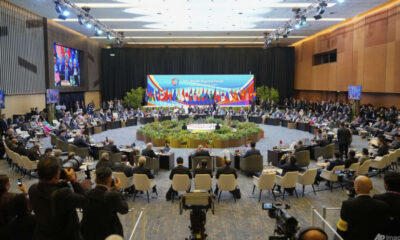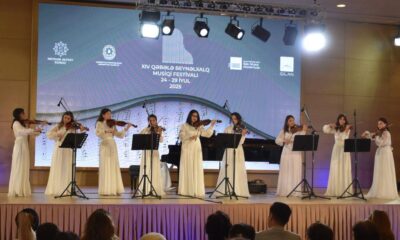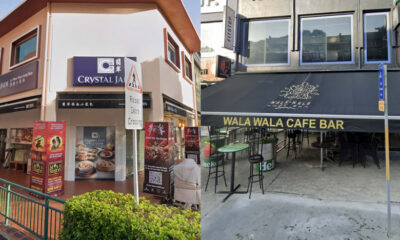Top Stories
Southeast Asia’s Luxury Market Thrives Amid Global Slowdown

Demand for luxury goods is experiencing its largest slowdown in over a decade, particularly impacting traditional markets such as China and the United States. Despite this global trend, Southeast Asia is emerging as an unexpected stronghold for luxury brands. This region is witnessing a surge in consumption, attributed to increasing affluence, a rebound in tourism, and a more deliberate approach to indulgence among consumers.
Recent analysis indicates that global luxury sales are forecasted to grow by only 2% in 2023, following a remarkable growth of 22% in 2021. The decline is notably pronounced in established luxury markets. For instance, sales in China have been hampered by economic uncertainty and shifting consumer preferences. In contrast, Southeast Asia is capitalizing on its unique position, with countries like Singapore and Thailand showing significant resilience.
Tourism plays a pivotal role in this regional luxury boom. The Asia-Pacific region has seen a resurgence in international travel, with visitors eager to spend on high-end products. According to a report by Bain & Company, tourism spending in Southeast Asia is projected to reach pre-pandemic levels by the end of 2023, bolstering luxury retail sales.
The rise in affluence across Southeast Asia is also noteworthy. As economies recover and grow, the number of high-net-worth individuals is on the rise. A recent study from Credit Suisse highlighted that the wealth of the ultra-rich in the region has increased significantly, leading to an uptick in demand for luxury items. This growth has prompted brands to tailor their offerings to meet the desires of these consumers.
Luxury brands are adapting their strategies to cater specifically to Southeast Asian markets. Companies are focusing on personalized experiences and exclusive products, aligning with local cultural values. For instance, many brands are enhancing their digital presence to engage the tech-savvy consumer base, which has a growing appetite for online shopping.
This shift in market dynamics is underscored by the strategic moves of major luxury players. Brands such as Louis Vuitton and Gucci are investing in flagship stores in key cities throughout Southeast Asia, recognizing the region’s potential. Investment in marketing campaigns that resonate with local consumers is also on the rise, as companies aim to establish stronger connections.
The resilience of Southeast Asia’s luxury market signifies a broader trend where consumers are becoming more discerning. Buyers are increasingly prioritizing quality over quantity, often seeking unique and rare items that reflect their personal style and values. This change in consumer behavior is creating a more sustainable luxury market, where brands are encouraged to adopt ethical practices and transparent supply chains.
As luxury brands navigate the current global landscape, the Southeast Asian market stands out as a beacon of opportunity. The combination of increasing wealth, a recovering tourism sector, and evolving consumer preferences suggests that this region may continue to thrive, even as other markets struggle.
In summary, while the global luxury sector faces challenges, Southeast Asia is defying the odds. With a strategic focus on local engagement and an understanding of consumer needs, the region is poised for continued growth in the luxury market.
-

 Lifestyle2 months ago
Lifestyle2 months agoHumanism Camp Engages 250 Youths in Summer Fest 2025
-

 Sports2 months ago
Sports2 months agoDe Minaur Triumphs at Washington Open After Thrilling Comeback
-

 Business3 months ago
Business3 months agoKenvue Dismisses CEO Thibaut Mongon as Strategic Review Advances
-

 Sports3 months ago
Sports3 months agoTupou and Daugunu Join First Nations Squad for Lions Clash
-

 Top Stories3 months ago
Top Stories3 months agoColombian Senator Miguel Uribe Shows Signs of Recovery After Attack
-

 World3 months ago
World3 months agoASEAN Gears Up for Historic Joint Meeting of Foreign and Economic Ministers
-

 Business3 months ago
Business3 months agoOil Prices Surge Following New EU Sanctions on Russia
-

 Health2 months ago
Health2 months agoNew Study Challenges Assumptions About Aging and Inflammation
-

 Entertainment2 months ago
Entertainment2 months agoDetaşe-Sabah Violin Ensemble Captivates at Gabala Music Festival
-

 Entertainment2 months ago
Entertainment2 months agoBaku Metro Extends Hours for Justin Timberlake Concert
-

 Business3 months ago
Business3 months agoU.S. House Approves Stablecoin Bill, Sends to Trump for Signature
-

 Top Stories3 months ago
Top Stories3 months agoRethinking Singapore’s F&B Regulations Amid Business Closures









